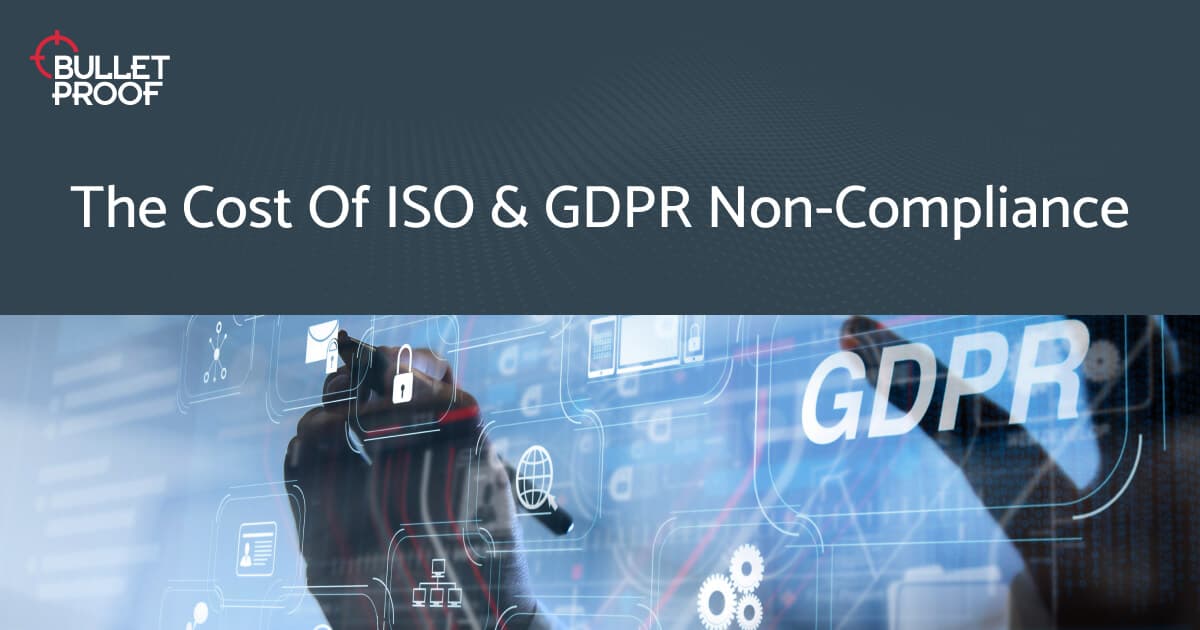US data transfers: are they allowed?
The UK-US data transfers bridge can be complicated. Find out what you need to know in this helpful GDPR blog about US data transfers to & from the EU & UK.

Introduction
US data transfers... are they allowed? Well. Yes. It depends. ...it’s complicated.
Let’s get stuck in and I’ll explain all. In July this year, the EU Commission made an adequacy decision for the new EU-US Data Privacy Framework (DPF). This can be seen as Safe Harbor 3.0. Essentially, in most scenarios, data transfers from the EU to the US are now permitted without the need for other mechanisms such as Standard Contractual Clauses (SCCs).
Share this Article
Even before the Commission made this decision, activist organisations were strongly lobbying against it and warning that they would look to take the matter to the European Court of Justice (CJEU). Many, including a sizeable portion of MEPs, argue that the changes to safeguards surrounding intelligence access to data in the US have been minor and thus the privacy landscape does not afford adequate protection. However, in reality, there are material improvements in place so there is a distinct possibility that this time around, the system weathers the inevitable judicial action.
In the event that the CJEU agrees with the activists, it will be the case that a number of transfers between now and such time as that decision is reached, will effectively be unlawful. It is likely that in that scenario, a grace period will exist for existing activities while people work on implementing an alternative mechanism for bringing the processing back to the EU.
To avail of the mechanism, US businesses are required to self-certify. These means that it is not a scheme that applies by default and requires a certain amount of work both on the US side of the transfer and the EU side where this needs to be checked. You can find more info about that here.
Why are US transfers so controversial?

The short answer: it’s all about state access to data. It’s no secret that US intelligence powers are robust and that many would wish to see greater safeguards and judicial oversight. However, these powers are not all that different from current or draft laws in place in a number of European countries. The new DPF relies on assurances from the US, which are backed by an executive order, that their intelligence powers will only be used in exceptional circumstances and that there are safeguards in place to prevent overreach. As part of this, a redress mechanism has been established. Only time will tell how effective these changes and assurances are.
And the UK?
After the release of a number of statements about US data transfers, the UK government finally adopted the UK-US Data Bridge in October 2023 So, what does it mean for UK transatlantic data flow?
Well, the Data Bridge is essentially an adequacy decision adopted by the UK Government. It allows UK organisations to transfer individual’s personal data without making extra efforts. It is affirmed as an extension of EU-US Data Privacy Framework where the US companies commit to specific privacy rules when dealing with personal data of the EU individuals. As a result of the Data Bridge, the same rules apply when they receive personal data of the UK individuals. So, US companies certified under this framework can easily and securely get data from the UK. But it is important to note that not all US organisations fall under the UK-US Data Bridge. Only US companies certified and within the jurisdiction of US Federal Trade Commission (FTC) and US Department of Transportation (DoT) have are covered. Companies which do not fall under this scheme can still rely on existing safeguards of standard contractual clause (SCC) and Binding Corporate Rules (BCR).
An interesting note whilst I’m here: the UK – US data bridge does not provide several rights that are in the GDPR: the right to be forgotten, the right to withdraw consent, and the right in relation to automated decision making and profiling. All of which means that it doesn’t offer similar level of protection to data subjects as granted by the UK GDPR.
So... what does this actually mean?
There is no blanket ban on data transfers from either the EU or UK to the US, and under GDPR, there never has been. There are a number of approaches to enabling transfers to the US, most commonly used are the Model Clauses (EU SCCs, UK International Data Transfer Agreement (IDTA), or SCCs with UK Addendum) and now the EU-US Data Privacy Framework and UK and US Data Bridge. Following the Schrems II case, these remain valid but require some additional safeguards such as encryption, security procedures, etc.
Another key route is the use of Binding Corporate Rules (BCRs). BCRs remain burdensome to gain approval for and for most businesses are out of reach. The time from commencing the journey to adoption and receiving approval is generally measured in years. While they are considered by regulators such as the ICO to be the gold standard, they require a hefty investment of time, work and money. Throw in the need to go through the process not only with the UK authorities but the EU ones as well for those businesses operating in both the UK and EU, and you can see why for the overwhelming majority of businesses, the benefits of eased data flows are insufficient to recoup that investment.
To make things more complicated, in some jurisdictions, within certain data in specific sectors, SCCs were not considered sufficient by their local regulators even with additional safeguards. For instance, some effectively banned US-managed (even with EU storage) cloud applications for the management of children’s health data. In other cases, optional processing such as analytics, required consent where such data would be accessible from the US.
There is no blanket ban on data transfers from either the EU or UK to the US, and under GDPR, there never has been.
“I need to transfer data to the US”

Do you? That sounds like a flippant response, but in all seriousness, the first thing to check is whether it’s actually necessary for your business objectives. The answer to this question is probably going to tell you which compliant mechanism is most appropriate as well. For instance, if it’s a one-off to help out a former employee that’s moved to the US, an Article 49 derogation might be more appropriate. For the long-term use of a data processor, often one where a comparable service is not available domestically, they may already have BCRs in place, otherwise either SCCs or IDTA would likely be the more relevant approach. And if the answer is that you can achieve the objectives without making the transfer, it’s unlikely that the benefits would outweigh the extra risks.
“I’m in the US, what do we do?”
For now, it’s advisable to be open to questions on the safeguards in place, the use of model clauses such as SCCs, and consider updating terms and paperwork to reflect the adequacy decision for EU customers. If you operate globally with large volumes of customers and of their data, you may wish to consult a privacy expert to help you to consider whether BCRs may be a good fit. These may be used to facilitate transfers to other operations globally (with a few exceptions due to sanctions and conflict). For instance, if you are headquartered in New York but have significant operations in Hong Kong, Dubai, Paris, London, and Sydney, BCRs could help you remain compliant while working seamlessly across borders.
If you’re processing (either as a controller or processor) personal data relating to people in the EU, it would certainly be advisable to read up and get more detailed advice on how to self-certify under the scheme. More information can be found on the US Government’s website for the scheme.
Summary
To circle back to my slightly facetious intro, EU-US transfers and UK-US transfers are now easier than they were before, but it’s unknown for how long that will be true. You can still transfer data to the US, but doing so in a compliant way still requires some paperwork and sometimes consent while in some sensitive areas.
Even though organisations using the UK-US Data Bridge are exempt from the adoption of standard contractual provisions, the UK addendum, and International Data Transfer Agreements... they still need to implement additional changes to allow the transatlantic flow of data. They must make sure that the US entity receiving the data is both a current participant in the DPF list and has signed up for the UK extension to the EU-US Data Privacy Framework. And when dealing with the transfer of HR data, it's essential to ensure that the organisation's DPF commitments explicitly cover HR data.
When making international transfers, it’s important to make sure that your paperwork is in order. This will include your Records of Processing Activities (RoPA), internal data protection policy, any contracts and agreements involved, your privacy notices, and potentially few others too. And nothing in SCCs, BCRs, the UK-US Data Transfer Bridge gets you off the hook for doing your basic supplier due diligence.
Easy, right? Okay maybe not. If you have any questions, concerns, or doubts about these, check with your Data Protection Officer. If all of this sounds interesting but you’ve no idea what it all means, then I recommend you talk to an expert straight away. It might even be me you get.
Thanks to Rebecca Bada and Isha Mishra for their help in creating this article

Easy access to expert data protection advice
Bulletproof’s seasoned data protection officers are on-hand to make sure you’re working and efficiently as possible whilst meeting your data protection obligations.
Get help from a DPO nowRelated resources
Get a quote today
If you are interested in our services, get a free, no obligation quote today by filling out the form below.














